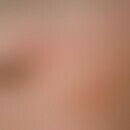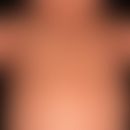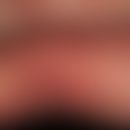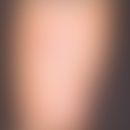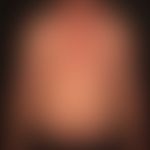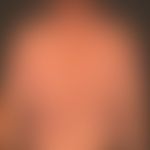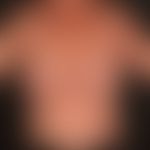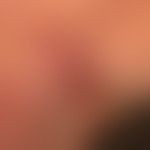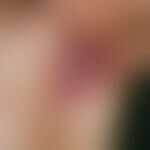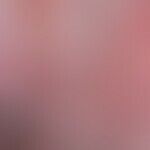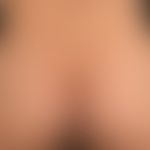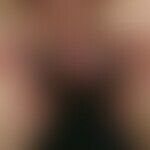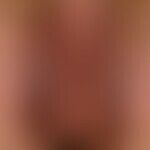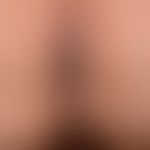Synonym(s)
HistoryThis section has been translated automatically.
Gougerot, 1933; Howard Hailey and Hugh Hailey (brothers), 1939.
DefinitionThis section has been translated automatically.
Eminently chronic, recurrent genodermatosis characterized by inflammatory, weeping and macerated areas in the large folds of the body. Frequent familial occurrence. No nosological relationship to pemphigus vulgaris. Provocation is possible by sun, heat, rubbing and microbial infections (Candida). Probably a variant of Darier's disease.
You might also be interested in
EtiopathogenesisThis section has been translated automatically.
Autosomal dominant inheritance with variable penetrance. Also new mutations. Several mutations have been detected in the ATP2C1 gene, which is mapped on chromosome 3q21-24. The ATP2C1 gene encodes a Golgi-associated Ca-ATPase (ATP2C1), which is responsible for the Ca content in the Golgi apparatus (Deng H et al. 2017). The human ATP2C1 protein has a size of about 115 kDa. ATP2C1 is localized in human keratinocytes in the Golgi apparatus. While normal keratinocytes have Golgi Ca2+ levels comparable to those of other epithelial cells, Ca2+ replenishment in the Golgi apparatus of keratinocytes with Hailey-Hailey disease is slower and the maximum Ca2+ concentration reached is significantly lower. These results can be replicated in vivo, as the clinically normal epidermis in Hailey-Hailey disease contained lower Ca2+ stores and had an abnormal Ca2+ gradient(Behne MJ et al. 2003).
Reduced Ca levels in keratinocytes lead to defective processing of various adhesion molecules(E-cadherin), insufficient cell-to-cell adhesion and acantholysis. See also Dyskeratosis follicularis.
ManifestationThis section has been translated automatically.
First manifestation rarely before the age of 10 LJ, usually after the age of 20.
LocalizationThis section has been translated automatically.
ClinicThis section has been translated automatically.
Classic (localized) type: Initially solitary or grouped, elongated vesicles or blisters, pronounced itching or burning. Due to confluence, formation of itchy, reddened, roundish, oval or circular, usually sharply defined plaques covered with greasy scaly crusts with typical transverse fissures. Often secondary infections (e.g. with Candida). Nikolski phenomenon I and Nikolski phenomenon II are positive.
Generalized type: Disseminated skin lesions with infestation of intertriginous and non-intertriginous areas (Cheng JW et al. 2022).
HistologyThis section has been translated automatically.
Acanthosis, acantholysis with formation of broad intraepidermal clefts and blisters, which can affect entire rete cones and also continue over the papilla tips; dyskeratotic transformation of the acantholytic cells, especially in the stratum granulosum, frequently corps ronds and grains (dyskeratoses), parakeratotic cells in the vesicle roof. Dermally there is a dense lymphohistiocytic infiltrate.
Electron microscopy: sparse desmosomes, desmolysis.
DD: Pemphigus vulgaris (P.v.): In contrast to P.v., eosinophilic granulocytes are absent in the intraepidermal lumina and there is no follicular involvement.
Direct ImmunofluorescenceThis section has been translated automatically.
No immunofluorescence phenomena detectable.
Differential diagnosisThis section has been translated automatically.
- Intertrigo
- Candidiasis
- Tinea corporis
- Pemphigus vegetans
- Dyskeratosis follicularis
- Tinea inguinalis.
Reminder. In the case of non-healing intertriginous "mycoses", always think of pemphigus chronicus benignus familiaris!
Complication(s)(associated diseasesThis section has been translated automatically.
Secondary infections.
General therapyThis section has been translated automatically.
External therapyThis section has been translated automatically.
Therapy for smaller foci with weak to moderate strength topical glucocorticoids such as 0.5% hydrocortisone creams/lotions(e.g. Hydro-Wolff, R123 ), 0.1% triamcinolone acetonide (e.g. Triamgalen), 0.25% prednicarbate cream(e.g. Dermatop). Instead of glucocorticoid externals, lesions can also be carefully injected with glucocorticoid crystal suspension, e.g., triamcinolone (e.g., Volon A 10-20 mg diluted 1:2 with LA such as 1% scandicaine solution).
Successful therapy attempts with Tacrolimus (e.g. Protopic) are described casuistically (off-label use!).
Often the lesions are bacterially or mycotically superinfected, therefore alternating therapies with local disinfectants are recommended, e.g. polihexanide (Serasept) or octenidine (Octenisept). Dyes are less practical in daily use (discoloration of the surrounding area).
Alternatively, glucocorticoid/antiseptic or glucocorticoid/antiseptic/antifungal combinations can be used, such as 0.5% clioquinol/hydrocortisone cream R051, clioquinol/flumethasone cream (Locacorten Vioform), triclosan/flumethasone(Duogalen), or nystatin/fluprednidene acetate paste(e.g., Candio-Hermal Plus paste). Caveat. There is an increased risk of local glucocortical side effects in intertrigines!
Internal therapyThis section has been translated automatically.
The overall therapy is not satisfactory. Positive treatment results with DADPS (e.g. dapsone fatol) 50-100-150 mg/day p.o. or acitretin (neotigason) 10-20 mg/day, 10 mg every 2nd day p.o. (not very effective in our own experience) have been reported in individual cases.
Systemic immunosuppressants such as ciclosporin A (e.g. Sandimmun) or methotrexate (e.g. MTX) cannot be recommended due to the long-term side effects.
Successes have been reported with the biologic etanercept and the phosphodiesterase 4 inhibitor apremilast (Kieffer J et al. 2018).
Successes with botulinum toxin A (Kothapalli A et al. 2019), low-dose naltrexone (3.0-4.5 mg/night; Albers LN et al. 2017; Jaros J et al. 2019) have been described in individual case reports. The possible mechanism could be that low-dose naltrexone affects opioid or toll-like receptor signalling to enhance calcium mobilization and promote keratinocyte differentiation and wound healing.
Operative therapieThis section has been translated automatically.
Cryosurgery. Briefly freeze the lesional skin in an open spray procedure, allow to thaw and immediately follow with a second cycle. If this treatment modality does not lead to lasting success, complete excision and secondary wound healing or plastic coverage with mesh graft.
- Alternative: Dermabrasion of the epidermal part can lead to complete healing, but may need to be repeated one or more times.
- Alternative: Treatment with ablative lasers such asCO2 or erbium-YAG laser, whereby satisfactory long-term results have been achieved, especially when using the CO2 laser (Antonanzas J et al. 2024).
- Alternative: photodynamic therapy (Yan XX et al. 2015)
Progression/forecastThis section has been translated automatically.
Chronic recurrent course with remissions. In about 50% of the patients leukonychia striata longitudinalis.
Case report(s)This section has been translated automatically.
Medical history and clinical findings:
In a 53-year-old woman, there have been coin-sized erythema and plaques for years, partly with, partly without moist-crusty overlays, in places small-surface, painful erosions. In the area of both axillae extensive, red, rough plaques, interspersed with multiple fissures. Pronounced fetid odor here. Diagnostically groundbreaking, streak-like and punctate erosions when the skin is stretched. Nikolski phenomenon I + II positive. Currently no blisters. However, the patient had already observed these.
Histological findings:
Formation of intraepidermal clefts and blisters, In the stratum granulosum evidence of corps ronds and grains. Superficial, perivascular and interstitial infiltrate of lymphocytes with some eosinophilic granulocytes.
Direct immunofluorescence: o.B.
LiteratureThis section has been translated automatically.
- Albers LN et al. (2017) Treatment of Hailey-Hailey Disease With Low-Dose Naltrexone. JAMA Dermatol 153:1018-1020.
- Antoñanzas J et al. (2024) Improvement in quality of life in patients with Hailey-Hailey disease treated with ablative CO2 laser. J Dtsch Dermatol Ges 22:9 96-998.
- Behne MJ et alk. (2003) Human keratinocyte ATP2C1 localizes to the Golgi and controls Golgi Ca2+ stores. J Invest Dermatol121:688-694.
- Ben Lagha I et al. (2020) Hailey-Hailey Disease: An Update Review with a Focus on Treatment Data. Am J Clin Dermatol 21:49-68.
- Cheng JW et al.(2022) Generalized erythematous plaques with maceration and crusting. J Dtsch Dermatol Ges 20:1520-1523.
- Choi DJ et al. (2002) Hailey-Hailey disease on sun-exposed areas. Photodermatol Photoimmunol Photomed 18: 214-215
- Deng H et al. (2017) The role of the ATP2C1 gene in Hailey-Hailey disease. Cell Mol Life Sci 74: 3687-3696.
- Falto-Aizpurua LA et al. (2015) Laser therapy for the treatment of Hailey-Hailey disease: a systematic review with focus on carbon dioxide laser resurfacing. J Eur Acad Dermatol Venereol 29:1045-1052.
- Gougerot H (1933) Forme de transition entre la dermatite polymorphe douloureuse de Brocq-Duhring et le pemphigus congénital familial héréditaire. Annales de dermatologie et de syphiligraphie (Paris) 5: 255
- Hailey H, Hailey H (1939) Familial benign chronic pemphigus. Report of 13 cases in 4 generations of a family and report of 9 additional cases in 4 generations of a family. Arch Derm Syph 39: 679-685
- Hamm H et al (1994) Hailey-Hailey Disease. Eradication by dermabrasion. Arch Dermatol 130: 1143-1149
- Heymann WR (2019) Naltrexone Therapy for Hailey-Hailey Disease: Confirming My Addiction to Evidence-Based Medicine. Skinmed 17:44-45.
- Hwang LY et al (2003) Type 1 segmental manifestation of Hailey-Hailey disease. J Am Acad Dermatol 49: 712-714
- Jaros J et al (2019) Low Dose Naltrexone in Dermatology. J Drugs Dermatol 18:235-238.
- Kieffer J et al. (2018) Treatment of Severe Hailey-Hailey Disease With Apremilast. JAMA Dermatol 154:1453-1456.
- Koeyers WJ et al. (2008) Botulinum toxin type A as an adjuvant treatment modality for extensive Hailey.Hailey disease. J Dermatol Treat 19: 251-254
- Lee B et al. (2019) The uses of naltrexone in dermatologic conditions. J Am Acad Dermatol 80:1746-1752.
- Leung N et al. (2018) Long-term improvement of recalcitrant Hailey-Hailey disease with electron beam radiation therapy: Case report and review. Pract Radiat Oncol 8:e259-e261.
- Li H, Sun XK et al. (2003) Four novel mutations in ATP2C1 found in Chinese patients with Hailey-Hailey disease. Br J Dermatol 149: 471-474
- Nanda KB et al (2014) Hailey-hailey disease responding to thalidomide. Indian J Dermatol 59:190-192.
- Ni J et al. (2018) Psoriasiform Hailey-Hailey Disease Presenting as Erythematous Psoriasiform Plaques Throughout the Body: A Case Report. Perm J 22:17-016.
- Norman R et al. (2006) Case report on etanercept in inflammatory dermatoses. J Am Acad Dermatol 54: 139-142
- Ortiz AE et al. (2011) Laser therapy for Hailey-Hailey disease: review of the literature and a case report. Dermatol Reports 3:e28.
- Rabeni EJ et al. (2002) Effective treatment of Hailey-Hailey disease with topical tacrolimus. J Am Acad Dermatol 47: 797-798
- Riquelme-Mc Loughlin C et al. (2019) Low-dose naltrexone therapy in benign chronic pemphigus (Hailey-Hailey disease): A case series. J Am Acad Dermatol 81:644-646.
- Wilk M et al. (1994) Pemphigus chronicus benignus familiaris (Hailey-Hailey disease) and bipolar affective disorder in three members of one family. Dermatology 45: 313-317
- Xing XS et al. (2015) Three novel mutations of the ATP2C1 gene in Chinese families with Hailey-Hailey disease. J Eur Acad Dermatol Venereol doi: 10.1111/jdv.131
- Yan XX et al. (2015) Successful treatment of hailey-hailey disease with aminolevulinic acid photodynamic therapy. Ann Dermatol 27:222-223.
Incoming links (35)
Acantholysis; Anal eczema contact allergic; ATP2C1 Gene; Candidosis intertriginous; Chronic pemphigus; Chronic recurrent acantholysis; Clioquinol 2%-hydrocortisone 0.5% cream (w/o); Cornicardial nevus; Dyskeratoid dermatosis; Dyskeratosis; ... Show allOutgoing links (44)
Acantholysis; Acanthosis; Acitretin; Adhesion molecules; Apremilast; ATP2C1 Gene; Botulinum toxin a; Candida; Candidoses; Ciclosporin a; ... Show allDisclaimer
Please ask your physician for a reliable diagnosis. This website is only meant as a reference.
